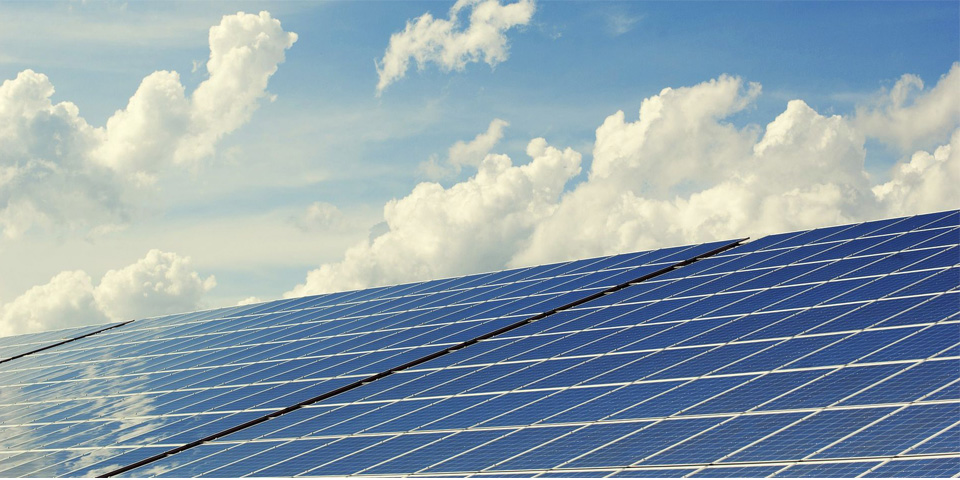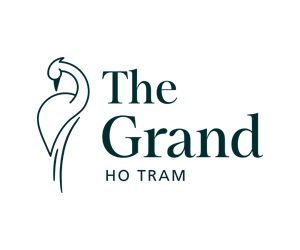Want to be in the loop?
subscribe to
our notification
Business News
SOCIAL AND ECONOMIC SITUATION IN 2018
1. Gross Domestic Products (GDP) Growth
GDP in the fourth quarter of 2018 was estimated to increase by 7.31% over the same period last year, of which the sector of agriculture, forestry and fishery grew by 3.90%; the sector of industry and construction grew by 8.65%; the service sector expanded by 7.61%. The growth in the fourth quarter of 2018 was lower than the growth in the fourth quarter of 2017, but higher than the growth in the fourth quarter of years 2011-2016[1]. In terms of GDP use in the fourth quarter of 2018, final consumption increased by 7.51% from the same period last year; accumulated assets grew by 9.06%; export of goods and services jumped up by 10.69%; import of goods and services climbed by 9.50%.
Generally, GDP in 2018 was estimated to increase by 7.08%, the highest growth since 2011[2]. In the general growth of the whole economy, the sector of agriculture, forestry and fishery increased by 3.76%, contributing 8.7% to the general growth; the sector of industry and construction went up by 8.85%, contributing 48.6%; the service sector grew by 7.03%, contributing 42.7%.
The sector of agriculture, forestry and fishery gained the highest growth in the period 2012-2018[3]. In particular, the agriculture continued to confirm the clear trend of recovery with the increase of 2.89%, the highest increase of the period 2012-2018[4], contributing 0.36 percentage point to the growth rate of the whole economy‘s total value added; the fishery achieved a good result with an increase of 6.46%, contributing 0.22 percentage point; the forestry jumped up by 6.01%, but low propotion, contributing only 0.05 percentage point.
In the sector of industry and construction, the industry maintained the fairly good growth with 8.79%, contributed 2.85 percentage points to the growth rate of the whole economy‘s total value added. The manufacturing continued to be a highlight of this sector and main driver of economic growth with a high increase of 12.98%, lower than the increase of 2017 but much higher than the growth of years 2012-2016[5], contributed 2.55 percentage points. The mining and quarrying still recorded a negative growth (down 3.11%), reduced 0.23 percentage point of the growth rate of the whole economy‘s total value added, however, the reduction rate narrowed considerably compared with the decrease of 7.1% of the previous year. The construction this year maintained a relatively high growth rate with 9.16%, contributing 0.65 percentage point.
The service sector this year increased by 7.03%, lower than the 7.44% increase of the previous year, but higher than the growth of years 2012-2016[6]. In the service sector, the contribution of a number of industries with a large share to the growth rate of the total value added in 2018 was as follows: Wholesale and retail sales increased by 8.51% over the same period last year, this was the industry with the highest growth rate in the service sector with the largest contribution to the growth rate of the total value added of the entire economy (0.92 percentage point); Financial, banking and insurance activities raised by 8.21%, contributing 0.53 percentage point; Accommodation and catering service grew by 6.78%, contributing 0.29 percentage point; Transportation and storage climbed by 7.85%, contributing 0.26 percentage point; Real estate business moved up by 4.33%, contributed 0.24 percentage point.
Size of the economy in 2018 at current prices reached 5535.3 trillion dongs; GDP per capital was estimated to be 58.5 million dongs, equivalent to US$ 2587, an increase of US$ 198 compared to that in 2017. In terms of 2018 economic structure, the sector of agriculture, forestry and fishery made up 14.57% of GDP; the sector of industry and construction accounted for 34.28%; the service sector represented 41.17%; the taxes less subsidies on production accounted for 9.98% (corresponding figures for 2017 were 15.34%; 33.40%; 41.26%; and 10.0%).
In terms of GDP use in 2018, final consumption increased by 7.17% from 2017; accumulated assets grew by 8.22%; export of goods and services expanded by 14.27%; import of goods and services moved up by 12.81%.
Quality of economic growth improved: In 2018, the contribution of Total Factor Productivity (TFP) to the GDP growth reached 43.50%, the average of three years 2016-2018 gained 43.29%, much higher than the average of 33.58% of the period 2011-2015. The labor productivity of the whole economy at current prices in 2018 was estimated at 102 million dongs per worker (equivalent to US$ 4512 per worker, an increase of US$ 346 compared to 2017) [7]; labor productivity in 2018 increased by 5.93% over 2017, much higher than the growth rate of 5.29% in 2016 and approximately the growth rate of 6.02% in 2017 because the labor force was added and the number of labor employed increased highly.
The efficiency of investment was improved with many new productive capacities added to the economy. The incremental capital output ratio (ICOR) decreased from 6.42 in 2016 to 6.11 in 2017 and 5.97 in 2018, average ICOR in the period 2016-2018 was 6.17, lower than the ICOR of 6.25 in the period 2011-2015.
+ Gross Domestic Products at current prices
+ Gross Domestic Products at constant 2010 prices
2. Production of agriculture, forestry and fishery
a) Agriculture
In the production of rice, in the winter-spring crop this year, the whole country cultivated 3.1 million ha, a decline of 15 thousand ha compared with the same crop last year due to the conversion of production structure and land use purposes. The productivity for the entire crop was estimated at 6640 kg/ha, a rise of 410 kg/ha; the yield gained 20.6 million tons, an increase 1.19 million tons.
The area of summer-autumn rice cultivation in 2018 reached 2.05 million ha, a decrease of 0.7% from the same crop in 2017, of which in the Mekong Delta, despite of the reduction in the cultivation area, but due to the productivity of 5480 kg/ha, a rise of 30 kg/ha, the output gained 8.8 million tons, an increase of 15.1 thousand tons.
The autumn-winter rice area in the Mekong Delta this year was estimated at 732.1 thousand ha, a decline of 78.1 thousand ha compared to that in 2017; the estimated productivity gained 5320 kg/ha, a rise of 90 kg/ha; the yield reached 3.9 million tons, a reduction of 343.2 thousand tons.
The area of winter rice cultivation achieved 1.68 million ha, a decrease of 28.1 thousand ha compared to that in the same crop last year; the estimated productivity recorded 4910 kg/ha, a growth of 320 kg/ha; the output was estimated at 8.26 million tons, an increase of 403 thousand tons.
Regarding the production of vegetables and annual plants: the output of maize reached 4.91 million tons, down 203.7 thousand tons against 2017 due to the decrease of 60.5 thousand ha of cultivated area (maize productivity increased by 70 kg/ha). The output of sweet potato gained 1.37 million tons, up 15.8 thousand tons (the cultivated area decreased by 3.9 thousand ha); the output of sugar-cane achieved 17.84 million tons, down 519.9 thousand tons (the cultivated area went down by 12 thousand ha); the yield of cassava gained 9.94 million tons, down 327.8 thousand tons (the cultivated area fell by 17.3 thousand ha); the yield of peanut reached 458.7 thousand tons, down 0.9 thousand tons (the area went down by 9.9 thousand ha); soya production attained 80.8 thousand tons, down 20.9 thousand tons (a decrease of 15.3 thousand ha of cultivated area); vegetables of all kinds achieved 17.09 million tons, up 622.5 thousand tons (the area increased by 23.3 thousand ha); beans of all kinds gained 155 thousand tons, down 8.1 thousand tons (the area decreased by 7.1 thousand ha).
In 2018, the planted area of perennial industrial crops was estimated at 3482.3 thousand ha, up 2.3% compared to that in 2017, of which the rubber area reached 965.4 thousand ha, down 0.4% from the previous year, the output of rubber for the whole year gained 1141.9 thousand tons, up 4.3%; the pepper area reached 149.9 thousand ha, up 0.1%, the pepper output achieved 255.4 thousand tons, up 1.1%; the coffee area was 688.4 thousand ha, up 1.6%, the coffee yield reached 1626.2 thousand tons, up 3.1%; the cashew area was 301 thousand ha, up 0.4%, its yield attained 260.3 thousand tons, up 20.6%; The tea area achieved 123.7 thousand ha, up 0.6%, the bud tea production gained 987.3 thousand tons, up 1.6%. The production of fruit trees this year was relatively high due to the increase in the cultivated area and the stable consumption market. Orange, tangerin, pomelo reached 1697.9 thousand tons, up 10.9% over the previous year; Mango attained 788.5 thousand tons, up 5.8%; Dragon fruits gained 1074.2 thousand tons, up 12.8%; Pineapple gained 674 thousand tons, up 9.1%. The production of longan and litchi was high due to the favorable weather condition.
As of December 2018, the whole country’s buffalo population reduced by 2.8% compared with the same period last year; cattle population increased by 2.7%; pig population grew by 3.2%; poultry population moved up by 6.1%. Production of live weight meat of all kinds this year was quite good. Output of live weight of buffalo reached 92.1 thousand tons, a rise of 4.7% over the same period last year; production of live weight of cattle recorded 334.5 thousand tons, a rise of 4; production of live weight of pig reached 3.8 million tons, a growth of 2.2%; production of live weight of poultry gained 1.1 million tons, an increase of 6.4%; poultry egg gained 11.6 billion pieces, a growth of 9.5%. The output of cow’s milk for the whole year 2018 reached 936 thousand tons, up 6.2% from 2017.
b) Forestry
In 2018, the whole country’s concentrated planted forest area was estimated to reach 238.6 thousand ha, a decline of 1.2% against 2017; the number of separate planted trees in the whole year gained 85.8 million trees, a decrease of 0.3%; wood production achieved an estimate of 12.8 million m3, a rise of 9.6%; firewood production gained 23.7 million steres, a decline of 1.2%. Damaged forest area was 1283.3 ha, down 17.8% against 2017, of which the burnt forest area was 739.1 ha, a rise of 41.7%; the destroyed forest area was 544.2 ha, a decrease of 47.6%.
c) Fishery
Fishing production in the whole year was estimated to reach 7756.5 thousand tons, up 6.1% over the previous year (it gained 2106.4 thousand tons in the fourth quarter, up 6.4%), of which fish achieved 5602.8 thousand tons, up 6.7%; shrimp achieved 966.1 thousand tons, up 7%.
The whole country’s production of aquaculture was estimated at 4153.8 thousand tons, a rise of 6.7% from 2017 (it was 1228.2 thousand tons in the fourth quarter, up 6.9%), of which fish reached 2902.5 thousand tons, increasing by 6.9%; shrimp gained 804.3 thousand tons, climbing by 8.1%. The shark catfish farming area in 2018 was estimated at 22.4 thousand ha, a decline of 0.9% against the previous year. Estimated production of Asian tiger shrimp was 274.3 thousand tons, putting up by 5.5% from the same period last year; whiteleg shrimp gained 492.3 thousand tons, moving up by 10%.
Production of fishery caught in the whole year achieved an estimate of 3602.7 thousand tons, increasing by 5.3% compared with that in 2017 (it reached 878.2 thousand tons in the fourth quarter, a rise of 5.7%), of which fish gained 2700.3 thousand tons, up 6.4%; shrimp recorded 161.8 thousand tons, up 1.8%.
+ Cultivation progression of agricultural crops as of December 15, 2018
+ Cultivated area, productivity and yield of main crops
+ Cultivated area, productivity and yield of selected annual industrial plants
+ Cultivated area, productivity and yield of selected perennial industrial plants
+ Animal husbandry as of October 01
+ Main products of animal husbandry
+ Outcome of forestry production
+ Fishing production
3. Industry
Generally, in the whole year 2018, the index of industrial production (IIP) for the entire industry increased by 10.2% over the previous year (it grew by 12.7% in the first quarter, 8.2% in the second quarter, 10.7% in the third quarter and 9.4% in the fourth quarter), lower than the growth rate of 11.3% in 2017. Of the industries, the manufacturing continued to play a key role promoting the general growth of the whole industry with the increase of 12.3% (although this rate was lower than the growth rate of 14.7% in 2017, it was higher than the increase in years 2012-2016[8]), contributing 9.5 percentage points to the general growth; the production and distribution of electricity ensured the sufficient electricity supply for production and consumption of the population with the increase rate of 10%, contributing 0.9 percentage point; the water supply and waste treatment grew by 6.3%, contributing 0.1 percentage point; only the mining and quarrying decreased by 2% (mainly because the exploitation of crude oil fell by 11.3%), reduced 0.3 percentage point of the general growth.
Generally, in 2018, consumption index of the whole manufacturing increased by 12.4% against the previous year (it grew by 10.2% in 2017). Inventory index of the entire manufacturing as of December 31, 2018 was estimated to increase by 14.1% over the similar period last year (it went up by 9.5% in the same period in 2017). Average inventory rate of the whole manufacturing in 2018 was 64.4%, the lowest inventory rate in recent years[9].
+ Industrial Production Index in December and the whole year 2018
+ Industrial Production Index in quarters of 2018
+ Main industrial products in December and the whole year 2018
+ Main industrial products in quarters of 2018
+ Consumption and stock indexes of the manufacturing
+ Labor employed index (LEI) for industrial enterprises
4. Operation of enterprises
a) Business registration situation
In 2018, the whole country had 131,275 enterprises registered for new establishment with a total registered capital of 1478.1 trillion dongs, an increase of 3.5% in the number of enterprise and 14.1% rise in the registered capital compared with the figure in 2017[10]. Average registered capital per newly established enterprise reached 11.3 billion dongs, up 10.2%. Total registered capital added to the economy in 2018 was 3886.9 trillion dongs, including 2408.8 trillion dongs of additionally registered capital of enterprises increasing their capital. In addition, there were 34,010 enterprises returning to operation, a rise of 28.6% over the previous year, bringing the total number of newly registered enterprises and re-operated enterprises this year to nearly 165.3 thousand enterprises. Total registered employees of the newly established enterprises in 2018 was 1107.1 thousand persons, a decrease of 4.7% against the previous year.
The number of temporarily ceased enterprises in 2018 was 90,651 ones, an increase of 49.7% against the previous year, including 27,176 enterprises registered for time-limited temporary cessation of business, rising by 25.1% and 63,525 enterprises temporarily suspended operation without registering or waiting for dissolution, increasing by 63.4%[11]. The number of enterprises which finished the procedure for dissolution in 2018 was 16,314 ones, an increase of 34.7% from the previous year, of which there were 14,880 enterprises with capital size of less than 10 billion dongs, accounting for 91.2% and growing by 34.2%.
+ Number of newly registered enterprises by kinds of activity
+ Number of enterprises returned to operation
+ Number of temporarily ceased enterprises by kinds of activity
b) Business trends of enterprises
Survey results on business trends of enterprises in the manufacturing industry in the fourth quarter of 2018 showed that: 44.7% of enterprises rated their business performance in the fourth quarter of 2018 better than the previous quarter; 16.9% of enterprises pointed to difficulties and 38.4% of enterprises said that their business and production situation was stable. Expected the first quarter of 2019 compared with the fourth quarter of 2018, 47.3% of enterprises rated the trend would be better; 14.9% of enterprises forecasted more difficulties and 37.8% of businesses thought that the business and production situation would be stable.
5. Service activities
In 2018, total estimated retail sales of consumer goods and services reached 4395.7 trillion dongs, up 11.7% against the same period last year, if excluding the price factor, the growth rate was 9.4% (it increased by 9.3% in 2017), of which it gained 1161.5 trillion dongs in the fourth quarter of 2018, a rise of 4.4% from the previous month and a rise of 12.9% over the same period last year.
By kinds of economic activity, retail sales of goods in 2018 gained an estimate of 3306.1 trillion dongs, accounting for 75.2% of the total and increasing by 12.4% over the previous year. Estimated sales of accommodation and catering services was estimated at 539.5 trillion dongs, accounting for 12.3% of the total and moving up by 9.1% over the previous year. Sales of travelling achieved an estimate of 41 trillion dongs, making up 0.9% of the total and climbing by 14.1% against the previous year. Sales of other services were estimated at 509.1 trillion dongs, representing 11.6% of the total and increasing by 9.8% from 2017.
Generally, in the whole year 2018, passenger carriage reached 4641.5 million passengers, up 10.7% over the same period last year and 207.1 billion passengers-kilometres, up 10.9%. Cargo carriage achieved 1634.7 million tons, up 10% and 306.4 billion tons-kilometres, up 7.6%.
By the end of 2018, the total number of telephone subscribers was estimated to achieve 129.9 million subscribers, an increase of 2.3% over the previous year, of which mobile phone subscribers reached 125.6 million ones, putting up by 3.8%; the number of fixed broadband Internet subscribers was estimated at nearly 13 million subscribers, an increase of 19.2% against 2017.
Generally, in 2018, international visitors to Vietnam were estimated at 15.5 million arrivals, a rise of 19.9% compared with the previous year (a rise of 2.6 million turns of arrival), of which number of visitors coming by airway gained 12.5 million arrivals, moving up by 14.4%; by road gained 2.8 million arrivals, rising by 59.6%; by seaway was 215.3 thousand arrivals with a fall of 16.8%. Visitors from Asia reached 12075.5 thousand of arrivals, up 23.7% over the previous year; visitors from Europe reached 2037.9 thousand arrivals, up 8.1%; visitors from the America reached 903.8 thousand arrivals, increasing by 10.6% over 2017; visitors from Australia gained 437.8 thousand arrivals, increasing by 4%; visitors from Africa achieved 42.8 thousand arrivals, a growth of 19.2%.
+ Total retail sales of consumer goods and services in December and 2018
+ Total retail sales of consumer goods and services in quarters of 2018
+ Carriage of passengers and cargos in December and 2018
+ Carriage of passengers and cargos in quarters of 2018
+ International visitors to Vietnam in December and 2018
+ International visitors to Vietnam in quarters of 2018
6. Banking and insurance operations
As of December 20, 2018, the total payment means increased by 11.34% over the end of 2017 (it grew by 14.19% in the same period in 2017); capital mobilization of credit organizations grew by 11.56% (it increased by 14.5% in the same period last year); credit growth of the economy reached 13.30% (it was 16.96% in the corresponding period in 2017).
Insurance business in the fourth quarter of 2018 continued to achieve the high growth, was estimated to increase by 22% compared with the same period last year, of which life insurance premium revenues rose by 26%; non-life insurance premium revenues grew by 13%. Estimated insurance premium revenues in 2018 achieved 133.7 trillion dongs, a rise of 24% compared with the same period in 2017, of which life insurance premium revenues gained 88 trillion dongs, an increase of 32.8%; non-life insurance premium revenues reached 45.7 trillion dongs, a growth of 9.9%.
7. Development investment
Total realized social investment capital in 2018 at current prices was estimated at 1856.6 trillion dongs, up 11.2% over the previous year (it gained 606.9 trillion dongs in the fourth quarter of 2018, up 12.5%) and equaling 33.5% of GDP, of which the State sector’s capital gained 619.1 trillion dongs, accounting for 33.3% of the total capital and increasing by 3.9% from the same period last year; the non-State sector’s capital obtained 803.3 trillion dongs, taking 43.3% and growing by 18.5%; the FDI sector’s capital attained 434.2 trillion dongs, representing 23.4% and moving up by 9.6%.
In the investment capital of the State sector, total realized investment capital under the State budget in 2018 reached an estimate of 324.9 trillion dongs, equaling 92.3% of the annual plan and increasing by 12.5% against the previous year (it equaled 93.9% of the yearly plan and grew by 6.6% in 2017), of which the capital under central management obtained 59.3 trillion dongs, equaling 89.9% of the annual plan and decreasing by 6.1% over the previous year; the capital under local management achieved 265.6 trillion dongs, equaling 92.8% of the annual plan and increasing by 17.7%.
From the beginning of the year to December 20, 2018, FDI attracted 3046 newly licensed projects with the total registered capital of US$ 17,976.2 million, an increase of 17.6% in the number of projects and a decline of 15.5% in the registered capital against the similar period in 2017. Besides, there were 1169 turns of license-granted projects from previous years registered to adjust investment capital with the additional capital of US$ 7596.7 million, down 9.7% from the same period last year. Therefore, the total of newly registered capital and additional capital in 2018 reached US$ 25,572.9 million, down 13.9% from 2017’s same period. Realized FDI capital in 2018 was estimated at US$ 19.1 billion, increasing by 9.1% over 2017. In 2018, there were 6496 turns of capital contribution and share purchase of foreign investors with a total contributory value of US$ 9.89 billion, a growth of 59.8% against 2017, of which 1113 turns of capital contribution and share purchase increased the charter capital of enterprises with the contributed capital of US$ 4.25 billion and 5383 turns of foreign investors bought back domestic shares without increasing charter capital with the value of US$ 5.64 billion.
Vietnam’s direct investment abroad in 2018 had 149 projects newly granted the Outward Investment Registration Certificate with Vietnam’s total investment capital of US$ 376.2 million; 35 projects adjusting the capital with additional capital of US$ 56 million. Generally, Vietnam’s total offshore investment capital (including newly granted and additional capital) in 2018 gained US$ 432.2 million of which the field of finance and banking reached US$ 105.8 million, accounting for 24.5% of the total investment capital; the field of wholesale and retail trade, repair of repair of motor vehicles gained US$ 52.3 million, accounting for 12.1%; the field of agriculture, forestry and fishery reached US$ 52.3 million, holding 12%; the field of manufacturing achieved US$ 52.1 million, representing 12%. In 2018, there were 38 countries and territories receiving Vietnam’s investment, of which Laos with US$ 81.5 million, accounting for 18.9% of the total investment capital; Australia with 55.5 million, making up 12.8%; the United States with US$ 53 million, taking 12.3%.
+ Realized social investment capital at current prices
+ Realized investment capital under the State budget in December and 2018
+ Realized investment capital under the State budget in quarters of 2018
+ Licensed FDI projects from January 01 to December 20, 2018
8. Government revenues and expenditures
Total estimated government revenues from the beginning of the year to December 15, 2018 achieved 1272.5 trillion dongs, equaling 96.5% of the annual estimate, of which domestic revenues reached 1012.3 trillion dongs, equaling 92.1%; collecting from crude oil gained 59.4 trillion dongs, equaling 165.5%; from export-import balance obtained 195.9 trillion dongs, equaling 109.4%.
Total government expenditures from the beginning of the year to December 15, 2018 was estimated at 1272.1 trillion dongs, equaling 83.5% of the yearly estimate, of which regular expenditures were 874.5 trillion dongs, equaling 93%; expenditure on development investment achieved 260.2 trillion dongs, equaling 65.1%; expenditure on interest payment was 102.2 trillion dongs, equaling 90.8%.
9. Exports and imports of goods and services
a) Exports of goods
Generally, in 2018, export turnover of goods was estimated to reach US$ 244.72 billion, a rise of 13.8% compared with 2017, of which the domestic economic sector achieved US$ 69.20 billion, moving up by 15.9%, accounting for 28.3% of total export turnover; the FDI sector (including crude oil) gained US$ 175.52 billion, increasing by 12.9%, accounting for 71.7% (a decline of 0.6 percentage point compared to 2017). If the price factor were excluded, export turnover of goods in 2018 would move up by 12.7% compared to 2017.
In 2018, 29 items achieved an export turnover of over US$ 1 billion, accounting for 91.7% of total export turnover of the whole country, of which 9 items reached over US$ 5 billion and 5 other items gained over US$ 10 billion. In general, the export proportion of some key items mainly belonged to the FDI sector. Crude oil in the whole year 2018 continued to decrease sharply in both the volume and export turnover compared to the previous year: The export turnover of crude oil reached US$ 2.3 billion, a decline of 21.2% (decrease of 39.5% in the volume).
b) Imports of goods
Import turnover of goods in 2018 reached an estimate of US$ 237.51 billion, moving up by 11.5% from the previous year (it gained US$ 64.37 billion in the fourth quarter, up 11.2%), of which the domestic economic sector gained US$ 94.80 billion, climbing by 11.3%; the FDI sector achieved US$ 142.71 billion, jumping up by 11.6%. If excluding the price factor, import turnover of goods in the whole year grew by 9.5% compared with 2017.
In 2018, 36 items was estimated to reach an import turnover of over US$ 1 billion, accounting for 90.4% of the total import turnover, of which 4 items gained over US$ 10 billion.
About merchandize trade balance in the whole year 2018, Vietnam continued to have trade surplus of US$ 7.2 billion, of which the domestic economic sector had trade deficit of US$ 25.6 billion; the FDI sector (including crude oil) had trade surplus of US$ 32.8 billion. In 2018, the domestic economic sector changed positively when reaching the growth rate of export turnover higher than the foreign invested sector with the proportion in the total export turnover increased compared to 2017[12].
c) Exports and imports of services
Service export turnover in 2018 were estimated to reach US$ 14.8 billion, up 13.2% compared to 2017 (it gained US$ 3.7 billion in the fourth quarter, up 9.3%), of which travel service gained US$ 10.1 billion (accounting for 68.1% of the total export turnover), a rise of 13.4%; transportation service achieved US$ 2.9 billion (accounting for 19.5%), increasing by 14.6%. Estimated service import turnover in 2018 reached US$ 18.5 billion, putting up by 8.1% over the previous year (it recorded US$ 4.6 billion in the fourth quarter, up 5.7%), of which transportation service gained US$ 8.8 billion (accounting for 47.8% of the total import turnover), increasing by 7.5%; travel service attained US$ 5.7 billion (making up 31%), rising by 13.7%. Trade deficit of services in 2018 was US$ 3.7 billion, equaling 24.9% of the service export turnover.
+ Exports in December and 2018
+ Exports in quarters of 2018
+ Imports in December and 2018
+ Imports in quarters of 2018
+ Import and export of services
10. Price indexes
a) Consumer price indexes (CPI)
Generally, in the fourth quarter of 2018, CPI increased by 0.6% compared with the previous quarter and by 3.44% from the fourth quarter of 2017. Average CPI in 2018 increased by 3.54% compared with that in 2017, lower than the goal set by the National Assembly. CPI in December 2018 grew by 2.98% over December 2017, average monthly CPI increased by 0.25%..
Core inflation in December 2018 increased by 0.09% over the previous month and by 1.7% from the same period last year. Average core inflation in 2018 moved up by 1.48% compared with that in 2017.
b) Gold price index and US dollar index
Gold price index in December 2018 increased by 0.41% against the previous month, decrease by 0.41% from December 2017; average gold price index in 2018 grew by 2.36% compared to 2017. The US dollar price index in December 2018 fell by 0.07% over the previous month and grew by 2.69% against December 2017; average US dollar price index in 2018 moved up by 1.29% over 2017.
c) Producer price indexes (PPI) and merchandize export-import price indexes
Generally, in the whole year 2018, PPI for the agriculture, forestry and fishery increased by 1.98% against 2017; PPI for industrial products grew by 3.09%; PPI for services went up by 2.98%.
Merchandize export price index in 2018 increased by 0.9% over 2017 (in the fourth quarter, it dropped by 0.44% from the previous quarter and climbed by 0.44% over the same period last year); Merchandize import price index jumped up by 1.82% from 2017 (in the fourth quarter, it grew by 0.31% against the previous quarter and put up by 2.09% over the same period last year). Merchandize term of trade in 2018 fell by 0.9% against 2017 (in the fourth quarter, it reduced by 0.74% compared with the previous quarter and decreased by 1.62% from the same period last year).
+ Consumer price indexes, gold, US dollar price indexes and core inflation in December 2018
+ Producer Price Indexes
+ Merchandize export price index
+ Merchandize import price index
+ Commodity term of trade
11. Population, labor and employment
The whole country’s average population in 2018 was estimated at 94.67 million persons, of which urban population was 33.83 million persons, accounting for 35.7%; rural population was 60.84 million persons, holding 64.3%; male population was 46.79 million persons, taking 49.4%; female population was 47.88 million persons, making up 50.6%. The total fertility rate was estimated to reach 2.05 children per woman (below the replacement level fertility). The sex ratio at birth was 115.1 male births per 100 female births; the crude birth rate was 14.58‰; the crude death rate was 6.82‰. The infant mortality rate (the number of deaths under age 1 over 1000 live births) was 14.24‰. The under five mortality rate (the number of deaths under age 5 per 1000 live births) was 21.38‰. The national average life expectancy in 2018 was 73.5 years, of which the average life expectancy of male was 70.9 years and the average life expectancy of female was 76.2 years.
The labor force aged 15 years and above in 2018 was 55.4 million persons, an increase of 566.2 thousand persons in comparison with that in 2017 (55.7 million persons in the fourth quarter, a rise of 530.7 thousand persons compared to the same period last year); the labor force within working age in 2018 was 48.7 million persons, an increase of 549.8 thousand persons.
The general unemployment rate in 2018 was 2.0%, of which this rate of urban area and rural area were 2.95% and 1.55%, respectively.
In 2018, the underemployment rate of labor force in working age was 1.46% (it was 1.52% in the first quarter, 1.43% in the second quarter, 1.45% in the third quarter, 1.44% in the fourth quarter), in which it was 0.69% for the urban area; 1.85% for the rural area.
+ Selected indicators on population
+ Selected indicators on labours
+ Unemployment and underemployment rate of laborers
12. Population’s living standard and social security
The population’s living standards have been generally improved. The average monthly income per capita in 2018 was estimated at 3.76 million dongs (an increase of 660 thousand dongs over 2016), on average, during the period 2016-2018, it grew by 10.2% per year. The According to Multidimensional poverty rate in 2018 was estimated at 6.8%, a decline of 1.1 percentage points from 2017. Farmers’ food shortage decreased sharply compared with 2017. In 2018, the whole country had 105 thousand households suffering from food shortage, a decrease of 42.1%, corresponding to 420 thousand persons suffering from food shortage, a decline of 43.7%. To overcome the food shortage, from the beginning of the year, all administrative levels, sectors and organizations from central to local level supported difficult households with 7.4 thousand tons of grain food and over 1.6 billion dongs.
Social security work continues to be paid attention to implement. According to the preliminary report, the total funding for social security and poverty reduction in 2018 was 4977 billion dongs, of which 2792 billion dongs as gifts were used to pay a compliment and support policy beneficiary objects; 1487 billion dongs were used to support poor households; and 698 billion dongs were used for other famine and social relief. In addition, near 23.6 million health insurances, free health care books/cards were donated to the policy beneficiaries throughout the country.
13. Education and training
In the school-year 2018-2019, the whole country had 5.3 million children attending kindergartens (0.7 million children attending nursery schools and 4.6 million children attending preschools); 16.6 million pupils of general education, including 8.4 million primary school pupils; 5.6 million lower secondary school pupils and 2.6 million of pupils in upper secondary schools; 1.5 million students in universities, colleges and intermediate schools[13].
At the present, there were 1954 vocational training establishments nationwide, including 394 colleges, 515 intermediate schools, and 1045 continuing training centers. Vocational training in 2018 enrolled 2210 thousand new students, of which 545 thousand students were enrolled for college and intermediate level; 1665 thousand students were enrolled for elementary level and other vocational training programs. Besides, in 2018, 800,000 rural workers were supported with vocational training according to the project “Vocational training for rural workers until 2020”.
14. Epidemic diseases and food poisoning
Generally, in 2018, the whole country had 125.2 thousand cases of hemorrhagic fever (16 cases died); 127.4 thousand cases of hand, foot, mouth disease; 628 cases of typhoid; 760 cases of virus encephalitis (21 cases died); 33 cases of meningococcal disease (2 case died); 673 cases of whooping cough (2 case died); 77 human cases of streptococcus suis infection (6 cases died); 2 cases of Zika virus infection; 72 cases died of rabies; and 84 cases of food poisoning making 3174 persons poisoned, of which 11 ones died.
Total number of alive HIV-infected persons over the country as of December 18, 2018 was 208.8 thousand persons and 94.9 thousand cases turned to AIDS. The number of persons died of HIV/AIDS nationwide as of above time-point was 98.16 thousand persons.
15. Cultural and sport activities
In high performance sport activities in 2018, the Vietnam sports won 391 gold medals, 296 silver medals and 235 bronze medals. At the 3rd Asian Para Games, the Vietnam Sports Delegation won 8 gold medals, 8 silver medals and 24 bronze medals, ranking 12th
out of 44 countries and territories. At the 2018 Asian Games (ASIAD 18), the Vietnam Sports Delegation won 4 gold medals, 16 silver medals and 18 bronze medals, ranking 17th out of 45 countries and territories.
16. Traffic accidents
Generally, in 2018, 18,232 traffic accidents occurred nationwide, including 9446 cases of traffic accidents from less serious to become and 8786 cases of traffic collisions, causing 8125 deaths, 5124 injuries and 9070 minor injuries. Compared to the same period last year, the number of traffic accidents this year declined by 9.2% (number of traffic accidents of differently serious levels reduced by 3.4%; number of traffic collisions decreased by 14.8%); number of death fell by 1.9%; number of injuries went down by 8.3% and number of minor injuries moved down by 20.8%. On average, a day in 2018, the number of traffic accidents occurred nationwide was 50 cases (down 5 cases from 2017), including 26 traffic accidents from less serious to become and 24 traffic collisions, causing 22 deaths and 14 injuries and 25 minor injuries.
17. Damages caused by natural calamity, environment protection, fire and explosion prevention
Natural calamity in 2018 made 218 people died and missing; 157 ones injured; 1967 thousand houses collapsed and swept away; 119 thousand houses flooded, damaged and roof ripped-off; over 260 thousand ha of paddy and crops damaged. The total loss caused by natural disasters this year was estimated at 15.7 trillion dongs.
In 2018, 13,929 cases of violating regulations of environment protection were found over the country, of which 12,759 cases were treated with total fine of over 200 billion dongs. In 2018, the whole country had 4075 fire and explosion cases, causing 112 deaths and 263 injuries, with an estimated damage of about 1.7 trillion dongs.
+ Some key social and environmental indicators
GENERAL STATISTICS OFFICE
[1] GDP growth in the fourth quarter of some years: 6.71% in 2011; 5.57% in 2012; 6.05% in 2013; 6.96% in 2014; 7.01% in 2015; 6.68% in 2016; 7.65% in 2017; and 7.31% in 2018.
[2] GDP growth in some years: 6.24% in 2011; 5.25% in 2012; 5.42% in 2013; 5.98% in 2014; 6.68% in 2015; 6.21% in 2016; 6.81% in 2017; and 7.08% in 2018.
[3] The growth rate of the value added of the agriculture, forestry and fishery sector in some years: 2.92% in 2012; 2.63% in 2013; 3.44% in 2014; 2.41% in 2015; 1.36% in 2016; 2.90% in 2017; and 3.76% in 2018.
[4] The growth rate of the value added of the agriculture in some years: 2.57% in 2012; 2.19% in 2013; 2.51% in 2014; 2.03% in 2015; 0.72% in 2016; 2.07% in 2017; and 2.89% in 2018.
[5] The growth rate of the value added of the manufacturing in some years: 9.05% in 2012; 7.22% in 2013; 7.41% in 2014; 10.60% in 2015; 11.90% in 2016; 14.40% in 2017; and 12.98% in 2018.
[6] The growth rate of the value added of the service sector in some years: 6.71% in 2012; 6.72% in 2013; 6.16% in 2014; 6.33% in 2015; 6.98% in 2016; 7.44% in 2017; and 7.03% in 2018.
[7] Labor productivity in 2017 achieved US$ 4166 per worker, an increase of US$ 314 compared to that in 2016.
[8] The manufacturing’s growth rate of production index in years 2012-2016 was 5.5%; 7.6%; 8.7%; 10.5%; 11.3%, respectively.
[9] Inventory rate in years 2016-2018 was 65.4%; 65.9% and 64.4%, respectively.
[10] In 2017, the number of newly registered enterprises grew by 15.2% over the previous year; the registered capital
moved up by 45.4%; average registered capital per enterprise went up by 26.2%.
[11] The number of enterprises temporarily suspended operation without registering or waiting for dissolution increased highly, one of reasons was that since April 2018, business registration offices over the country have reviewed, standardized data, eliminated enterprises which have been no longer in operation for a long time.
[12] In 2017, export turnover of the domestice economic sector increased by 18.5% compared to the previous year, accounting for 27.7% of total export turnover; the FDI (including crude oil) grew by 23.1%, making up 72.3%.
[13] Only including students in colleges and intermediate schools of education.
Related News

VIETNAM’S GDP TO GROW 5.5% THIS YEAR – WB
This forecast is based on the assumption of a moderate recovery in manufacturing exports in 2024, fueled by rebound growth of 8.5% year-on-year in the fourth quarter of 2023 and 17.2% year-on-year in the first quarter of 2024, reflecting strengthening global demand, said Dorsati Madani, senior country economist at the WB in Vietnam.

FARE REFUND FOR VISA REJECTION
Cathay Pacific will offer full refunds for cases of visa rejection to provide you with the confidence to explore the world with ease. If you are planning to fly to a destination that requires an entry visa, you can now book with greater peace of mind.

FOUR COMMODITIES POST Q1 EXPORT VALUE OF OVER 5 BILLION USD
The total export turnover of agricultural, forestry, and fisheries products in the first three months of 2024 is estimated to reach 13.53 billion USD, an increase of 21.8% compared to the same period of 2023.

MOIT PROPOSES SCHEME TO BOOST RENEWABLE ENERGY PROCUREMENT
The proposed Direct Power Purchase Agreement (DDPA) mechanism, outlined in the draft decree, targets organisations and individuals consuming electricity from the 22kV power grid or higher, with a monthly consumption averaging 500,000kWh. However, residential households are excluded from direct procurement.

REAL ESTATE BONDS PLACE PRESSURE ON ISSUING FIRMS
The ministry’s recent report underscores concerns within Vietnam’s corporate bond market for 2023 and 2024. It emphasizes the critical need to address hindrances to the real estate sector in line with the objectives provided in Government Resolution No. 33/NQ-CP, which aims to stabilize the industry.

DA NANG CUSTOMS FOCUSES ON DEVELOPING CUSTOMS-BUSINESS PARTNERSHIPS
Da Nang Customs Department issued an action plan for developing customs-business partnership in 2024. One of the new events this year is the workshop on “Settlement reports for enterprises engaged in outsourcing, export production and export processing” held in Da Nang Customs Department on April 16, 2024.

































